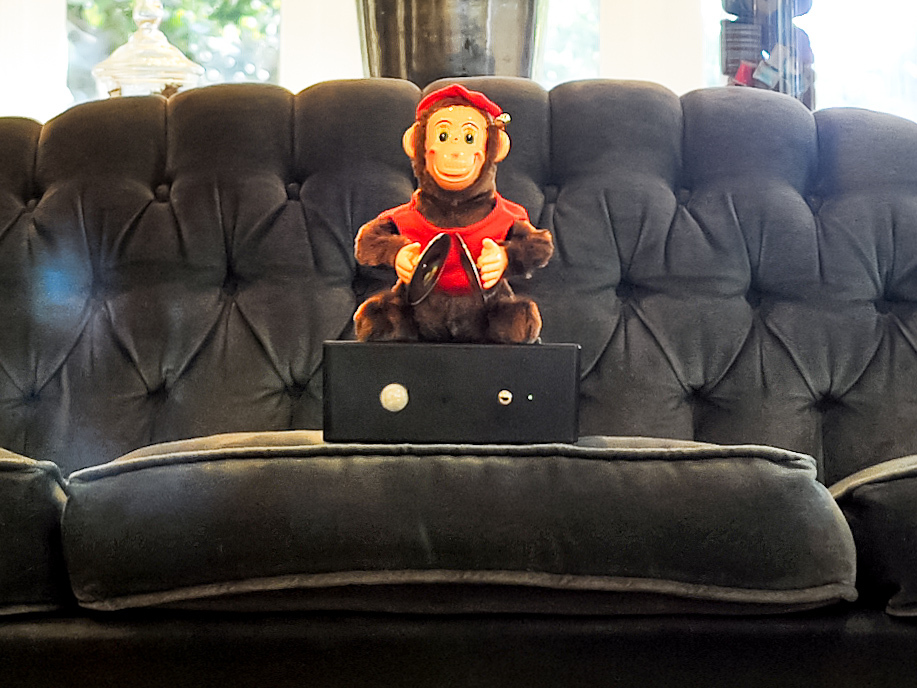
My cats like to jump on furniture and shed their fur, which ends up on my clothes. To stop them, I’m using a Monkey Couch Guardian. I made it from one of those old-fashioned cymbal-banging toy monkeys, modified with an inexpensive Arduino microcontroller and a proximity sensor. Now when a cat jumps on a table, couch, or bed, the Monkey Couch Guardian makes lots of noise, encouraging the cat to seek a quieter resting place.
I’ll show you how to make a simple PIR (passive infrared) sensor circuit to attach to a battery-powered, cymbal-banging monkey. You can use anything you like for an enclosure for the circuit. (I think a cigar box does nicely.)



